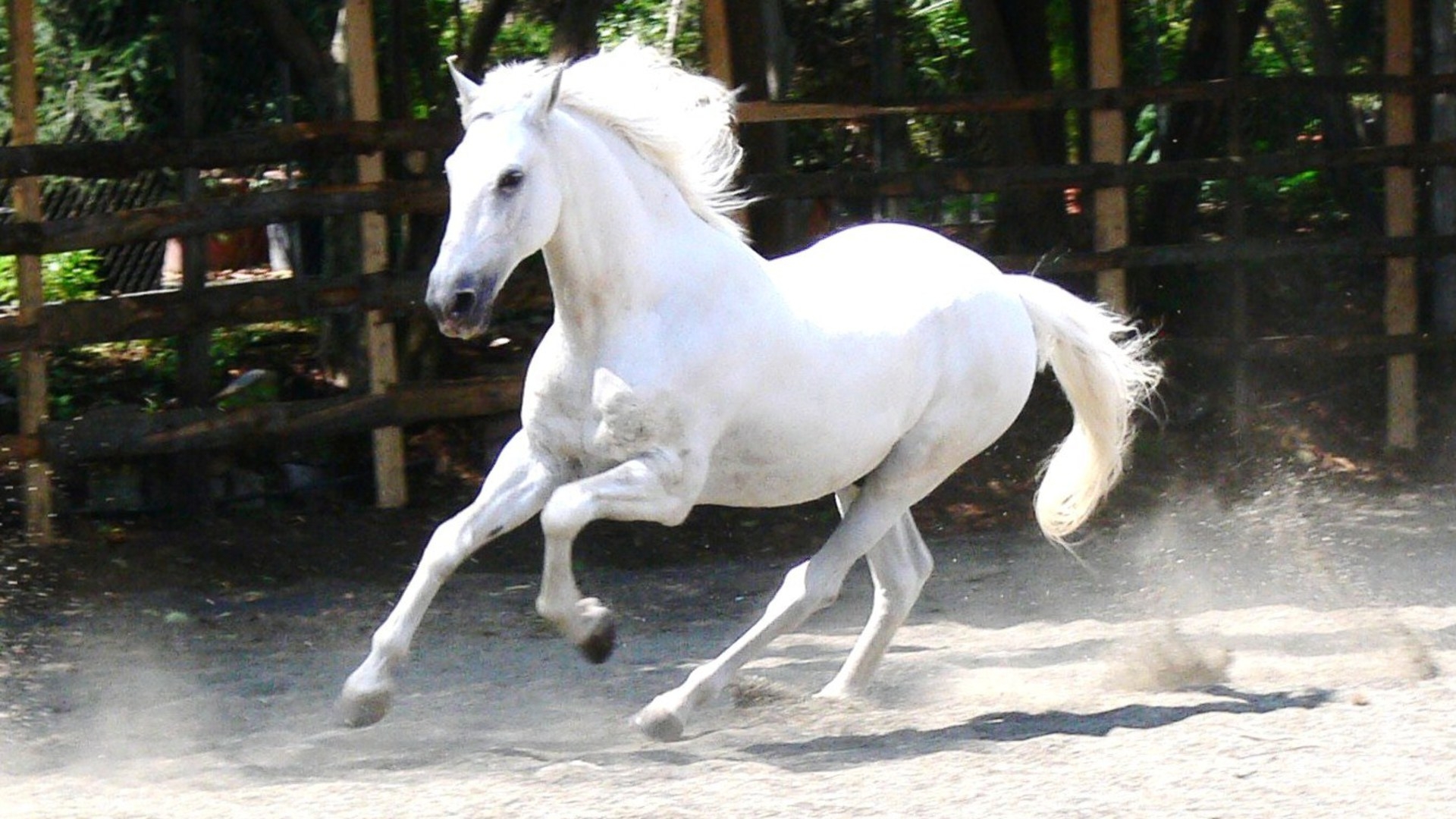A common space for harmonic peacemakers
The Magical Horse of Odin
In Norse mythology, Odin, the father of all gods, rides on an eight-legged horse named Sleipnir. This powerful and magical creature appears in both the Poetic and Prose Eddas. Images of Sleipnir have been found on stone carvings dating back as far as the eighth century. Many scholars believe that Sleipnir, with his eight legs instead of the usual four, is representative of the shamanic journey, which implies that this horse’s origins may go far back into Proto-Indo-European religion.
Horses in Divination
In Old Norse Religion in Long-Term Perspectives, authors Anders Andren, Kristina Jennbert, and Catharina Raudvere tell of the use of the horse as a divinatory tool by early Western Slavic tribes. This method, called hippomancy, involved the breeding of sacred horses to be used as oracles. Divination was performed when a horse walked over two spears placed in the ground in front of a temple. The pattern in which the horse stepped over the spears–including whether or not a hoof touched the spears–all helped the shamans determine the outcome of the matter at hand.
Sometimes, a horse is representative of doom and despair. Death is one of the Four Horsemen of the Apocalypse, and each of the four rides a different colored horse. In the Book of Revelations, Death arrives on a pale horse:
"And I looked, and behold a pale horse: and his name that sat on him was Death, and Hell followed with him. And power was given to them over the fourth part of the earth, to kill with sword, and with hunger, and with death, and with the beasts of the earth."
Interestingly, this Death image is repeated in the Tarot, as the Death card is typically portrayed as arriving on the back of a pale horse. However, it's important to remember that this card doesn't actually mean physical death. Instead, it's symbolic of transformation and rebirth. In that context, one might almost look at the horse as a guide on the journey to a new beginning. If horses are magical, and can walk or fly between the worlds, perhaps the horse's presence indicates a recognition that this change is not just material or physical, but that it goes all the way into our soul.
Horses and Fertility Magic
During the Beltane season, there are Hobby Horse celebrations in many parts of the United Kingdom and Europe. Beltane is a time of lust and sex and fertility, and few symbols are as representative of this as the hobby horse. In England, the hobby horse tradition goes back to the island's early Pagan roots, as the hobby horse welcomes in the fertility season. These festivals are tied to early pre-Christian fertility rituals, as the horse symbolizes the masculine energy of the season.
The early Romans recognized the horse as a symbol of fertility as well. Jack Tresidder says in his Complete Dictionary of Symbols that every year in the fall, Romans sacrificed a horse to Mars, who was not only a god of war but of agriculture as well. This was done in thanks for a bountiful harvest, and the horse's tail was kept in a place of honor over the winter, to ensure fertility the following spring. Later, the horse evolved from a fertility symbol into a role as messengers from the spirit world.
Horses and Protection Magic
Hang an iron horseshoe, open end facing down, to keep evil spirits out of your home. A horseshoe found along the side of a road was particularly powerful, and was known to provide protection against disease.
In addition to the horseshoe, the skull of a horse is often found in folk magic. In some countries, it is believed that the horse is able to detect malevolent spirits, so keeping a skull around once your horse has died makes sense. Horse skulls have been found under hearthstones and doorways in several locations in England and Wales. In fact, in Elsdon, Rothbury, an interesting discovery was made in 1877 during the renovation of the town church. According to the town’s official website,
"When the church was being repaired in 1877 three horses' skulls were discovered in a small cavity just above the bells. Possibly placed there as a pagan protection against lightning or to improve the acoustics or even as an act of sanctification they are now in a case in the church."
In his work Teutonic Mythology, Jacob Grimm explains some of the magic behind the head of a horse. He relays the tale of a Scandinavian bard who was banished from the kingdom by King Eirek and Queen Gunhilda. As revenge, he created what was called a nithing-post, designed to put a curse upon an enemy. He placed a stake in the ground, stuck a horse's head on it, and turned it to face into the kingdom, sending a hex to Eirek and Gunhilda. This apparently wasn't a new idea, even at that time. According to folklorist Robert Means Lawrence, in his work The Magic of the Horse Shoe, the
"Roman general Caecina Severus reached the scene of Varus' defeat by the German tribes under their chieftain Arminius, in the year 9 A.D., near the river Weser, he saw numbers of horses' heads fastened to the trunks of trees. These were the heads of Roman horses which the Germans had sacrificed to their gods."
Replies to This Discussion
-
Thanks, dearBridget, I have never heard of this, before!

-
Switch to the Mobile Optimized View
© 2025 Created by Eva Libre.
Powered by
![]()